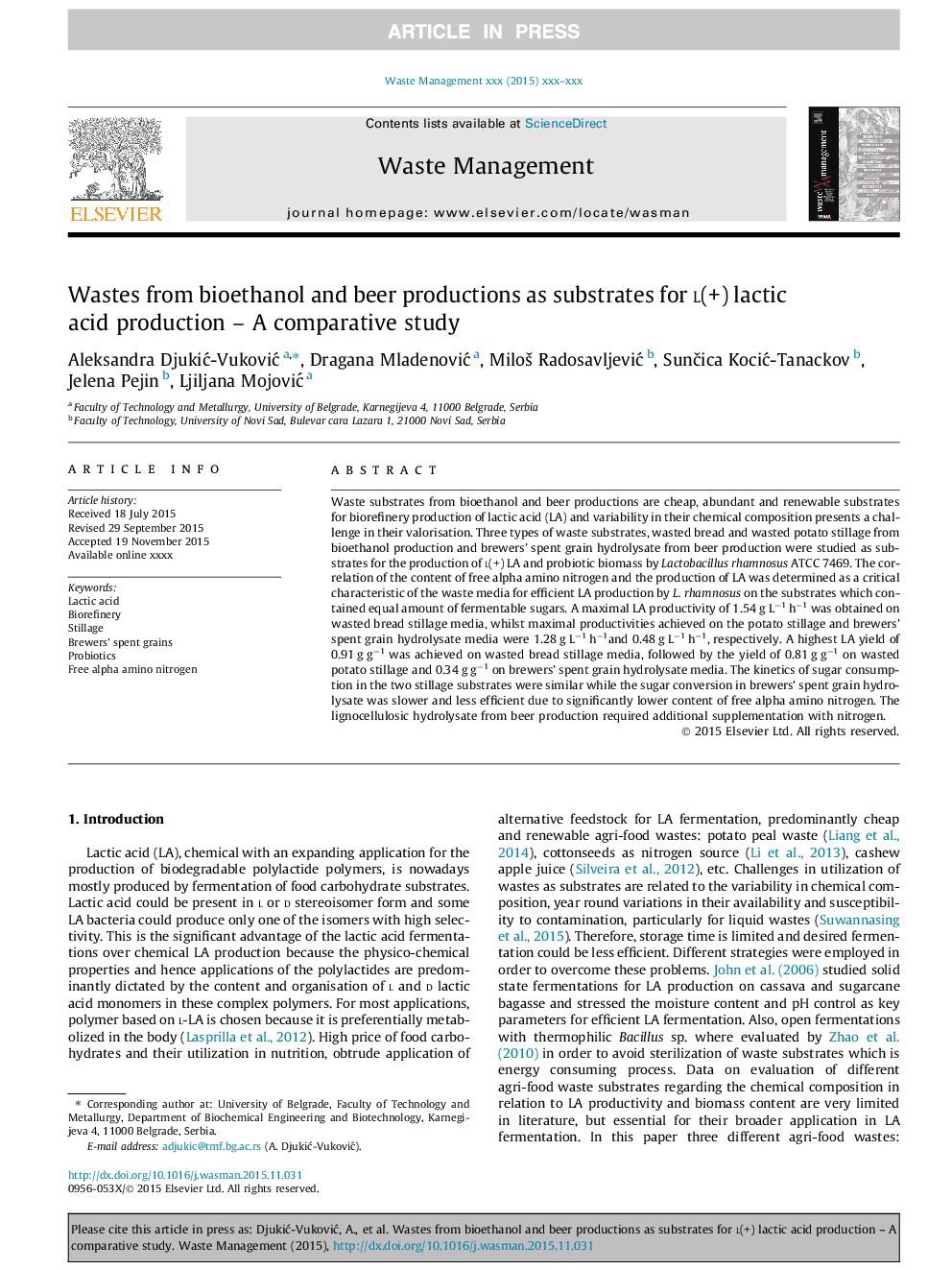| Article ID | Journal | Published Year | Pages | File Type |
|---|---|---|---|---|
| 6354195 | Waste Management | 2016 | 5 Pages |
Abstract
Waste substrates from bioethanol and beer productions are cheap, abundant and renewable substrates for biorefinery production of lactic acid (LA) and variability in their chemical composition presents a challenge in their valorisation. Three types of waste substrates, wasted bread and wasted potato stillage from bioethanol production and brewers' spent grain hydrolysate from beer production were studied as substrates for the production of l(+) LA and probiotic biomass by Lactobacillus rhamnosus ATCC 7469. The correlation of the content of free alpha amino nitrogen and the production of LA was determined as a critical characteristic of the waste media for efficient LA production by L. rhamnosus on the substrates which contained equal amount of fermentable sugars. A maximal LA productivity of 1.54 g Lâ1 hâ1 was obtained on wasted bread stillage media, whilst maximal productivities achieved on the potato stillage and brewers' spent grain hydrolysate media were 1.28 g Lâ1 hâ1and 0.48 g Lâ1 hâ1, respectively. A highest LA yield of 0.91 g gâ1 was achieved on wasted bread stillage media, followed by the yield of 0.81 g gâ1 on wasted potato stillage and 0.34 g gâ1 on brewers' spent grain hydrolysate media. The kinetics of sugar consumption in the two stillage substrates were similar while the sugar conversion in brewers' spent grain hydrolysate was slower and less efficient due to significantly lower content of free alpha amino nitrogen. The lignocellulosic hydrolysate from beer production required additional supplementation with nitrogen.
Related Topics
Physical Sciences and Engineering
Earth and Planetary Sciences
Geotechnical Engineering and Engineering Geology
Authors
Aleksandra DjukiÄ-VukoviÄ, Dragana MladenoviÄ, MiloÅ¡ RadosavljeviÄ, SunÄica KociÄ-Tanackov, Jelena Pejin, Ljiljana MojoviÄ,
